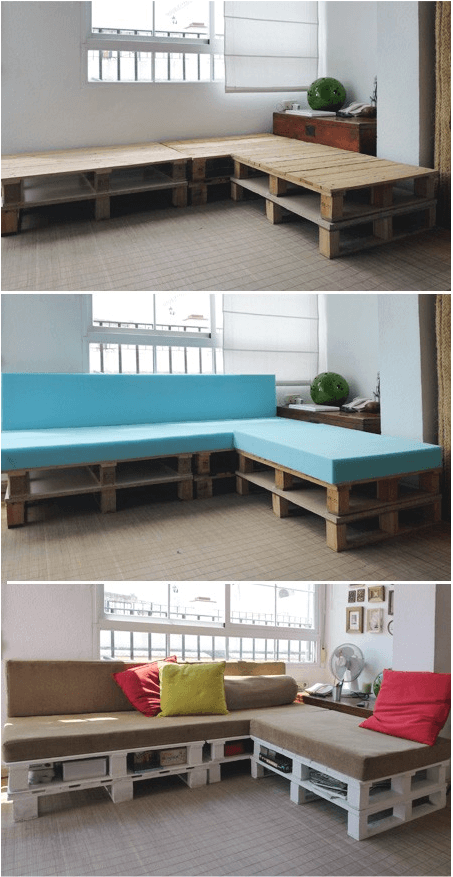Many recent graduates are choosing to go to business school to pursue an MBA, or Master of Business Administration. People who attend business school are typically interested in business administration and management, entrepreneurship, marketing and finance. Think of it this way: If the entrepreneurial Chuck Bass had actually gone to college, he undoubtedly would have pursued an MBA afterwards (we just can’t resist a Gossip Girl reference!).
While the head of Bass Industries probably could have bought his way in, the rest of us mere mortals must prove our merit by taking an entrance exam known as the GMAT. Whether you’re familiar with this test or not, it can be a bit daunting to take it, especially if you haven’t studied for a standardized test since your junior year of high school. But with a little help from Her Campus, you’ll be able to ace the GMAT and continue on your way to an MBA!
What is the GMAT?
The GMAT stands for the Graduate Management Admission Test and is the admission test you take to get into a post-graduate business program (think of it as the SAT for business school, only it costs a whopping $250!).
Format and scoring
There are four sections of the GMAT, each with a slightly different format.
- Analytical Writing Assessment: This section lasts 30 minutes and consists of one essay analysis of an argument, which will be graded twice by two different individuals and given a score from 0 to 6 in half-point intervals. The two scores will be averaged to obtain your final score. For an example of a past question, check out this page on MBA.com.
- Integrated Reasoning: This section lasts 30 minutes and consists of 12 questions covering reasoning, graphics interpretation and table analysis, graded from 1 to 8 in single-digit intervals, with no partial credit given. For example, you might be shown a table of data and then be asked to determine the accuracy of a series of statements based on the data given.
- Quantitative: This section is a bit longer, lasting 75 minutes and consisting of 37 questions covering data sufficiency and problem solving, and is graded from 0 to 60. An example of a Quantitative Section question is much more straightforward and could be something like this: “If u > t, r > q, s > t, and t > r, which of the following must be true?” There will be a series of statements, and you will have to choose which statement or combination of statements best answers the question.
- Verbal: This final section lasts 75 minutes and consists of 41 questions covering reading comprehension, critical reasoning and sentence correction, also graded from 0 to 60. For example, you might be given a statement and then asked which of the following assertions is best supported by the given statement.
Based on these divisions, you will receive five scores for the GMAT, one for each of the test sections and a total score ranging from 200 to 800. It’s important to note that the total score is based on your Verbal and Quantitative scores, and the Analytical Writing Assessment and Integrated Reasoning sections do not affect your total score.
According to MBA.com, the mean score is 547.35. For perspective, the average score at top-tier business schools is between 710 and 720, but you can check out the average scores at 200 of the best business schools in the world to find one that works for you. There are tons of amazing business schools out there, and you’re bound to end up at one you love, no matter how you score.
How to prepare
That being said, you obviously want to score well, and these five tips will help you prepare and feel confident for the GMAT and earn a spot at one of your top choice business schools!
1. Create a timetable
So, when should you take the GMAT? Most business schools have two rounds of application deadlines, the first being due in September or October and the second due around January. “Every business school sets its own application process,” says Will Taylor, pre-law & pre-graduate advising coordinator at the University of North Carolina at Chapel Hill. “A student needs to know the deadlines of the schools he or she is interested in before determining his or her own preparation and test-taking schedule.”
Taylor recommends taking the GMAT sooner rather than later. “In general, the GMAT should be taken no later than early in the fall semester, though I would recommend having it completed during the summer before the fall when applications will be turned in,” he says. In other words, if you plan on going right to business school after college, take the GMAT during the summer before your senior year of college or that fall at the latest. Keep in mind that your GMAT scores are valid for five years, so you don’t necessarily have to wait until your junior or senior year to take the test.
You will receive your GMAT scores (minus the Analytical Writing Assessment score) immediately after the exam on an unofficial score report. This report will contain the code you need to check your official scores online. According to MBA.com, within 20 days of taking your exam, you will receive an email with a URL to access your official score report online. Since the turnaround is so rapid, you can take the GMAT in the summer or fall and still meet the business school deadlines around October.
Once you’ve decided when to take the GMAT, it’s time to break out your day planner (or time to purchase one, if you haven’t yet!). You can take the GMAT once every 31 days, but no more than five times in a 12-year period, so pencil in the date(s) you plan to take the test and then work backwards. Schedule in any meetings you might want to have with a graduate adviser at your career center as well as any personal review sessions and the dates and times of any test prep courses you plan on taking.
How much time you give yourself to prepare varies by individual. Some students, like Kevin*, a senior at Harvard University, prepped for only a week before taking the exam, and one or two practice tests were enough to earn him a stellar score. Other students will start studying several months before the GMAT to give themselves plenty of time to read a prep book thoroughly, take a prep class or just become familiar with any potential material that might be on the test. If you’re not sure of the best way to approach your studying, set up a meeting with a graduate adviser at your career center and keep reading to find out more about the options available to you!
2. Familiarize yourself with the test
The official website of the GMAT is a gold mine of information and tools for GMAT preparation, so make sure you’re taking advantage of everything it has to offer! There is a search engine to find the test centers nearest to you as well as a checklist of what to bring to the test center and what to expect on the day of the test to calm any pre-GMAT jitters (and there will be plenty of those, no matter how prepared you are!). And if you’re not sure where you want to apply, there is a tool that allows you to filter schools to find the best program for you and compare your options.
Perhaps the best tool on the website, however, is the GMATPrep Software, which is free for registered users of MBA.com.
Kevin says he took advantage of these study materials when he took the test the summer before his junior year. “I actually just took two practice tests during the week leading up to the test, and did some practice questions on my own,” he says.
The GMATPrep Software includes 90 free questions, two full-length practice tests with answers, a comprehensive math review (perfect for all the humanities majors!) and a step-by-step guide to preparing for the exam.
Kerry, a senior at Bryant University, plans on taking a similar approach. “I plan on studying for the GMAT using the free [GMAT] online prep tests,” she says. “I originally thought about taking a prep course but heard from friends that they are really expensive, and with the registration cost of the GMAT already being $250, if I can save money, I want to!”
Since you’re already paying so much to take the GMAT, it certainly doesn’t hurt to take advantage of the perks that come with it!
3. Invest in a handbook
If you’re the kind of girl who likes to have hard-copy study materials and a hefty book to highlight and annotate, then a GMAT handbook is the way to go. “[One option] is to buy study books and take practice tests on one’s own,” Taylor says. “The benefits of this approach are that one has complete control over one’s schedule and is likely saving hundreds of dollars.”
There are lots of companies that make GMAT prep books, but a safe bet is The Official Guide for GMAT Review, 2015 ($45.95 at MBA.com). Regardless of which handbook you choose, do your best to get your hands on the most recent edition so that you’re up to date on the latest test trends.
These textbooks often contain an overview of the formatting and regulations of the GMAT itself as well as a review of some mathematical concepts. There’s also typically an initial test at the beginning of the book to estimate your GMAT score before working through the textbook. These tests can be super helpful in determining which areas you should focus more on. For instance, if you’re totally set on the reasoning problems but struggling with table analysis, then you know to spend a bit of extra time brushing up on that material. These books will also contain at least one full-length practice test with an answer key, and sometimes up to six tests in one book. If you work through the book as directed, you should notice marked improvement in your score from your initial test to your final practice test.
4. Take a test prep course
Taking a GMAT test prep course is another fabulous means of scoring high on the exam. “The second option is to take a course through a company like Princeton Review or Kaplan,” Taylor says. “The benefits of this approach are expert advice and insider tips as well as a structured schedule to make sure one actually completes one’s preparation.”
Test prep companies like Kaplan,Veritas Prep and The Princeton Review all offer GMAT test prep courses to best suit your time constraints and learning preferences. You have the option to attend private tutoring sessions, a group prep session taught in a classroom or an online prep class, or you can even follow pre-recorded lessons on your laptop or mobile device.
The instructors of these courses are certified to teach GMAT material and have taken and done well on the test themselves, so you’ll be in great hands. These programs are a great way to practice some questions you might see on the GMAT as well as an opportunity to discuss any questions you may have with a certified GMAT instructor. While these courses are expensive, costing anywhere from several hundred dollars for an online prep class to $2,500 for a private tutor, they’re an awesome option for the collegiette who struggles with setting aside study time and is a hands-on learner. Being held accountable for showing up to a prep class will ensure you’re putting in the hours!
5. Daily questions and apps
If you prefer to break the GMAT down into individual questions, download one of the many mobile apps available, like Prep4GMAT, a free app for iPhone and Android devices. This app begins by evaluating your knowledge and estimating your GMAT score and then tailors its study tips and questions to the areas you need to work on.
You can also sign up for daily GMAT questions to be sent to your email address through sites like GMAT Hacks. These questions should take no more than five minutes (give one a whirl on your morning commute!), and they will help to keep your mind sharp and the GMAT more manageable.
There are many different ways to prepare for the GMAT, and the method you choose should be one that works for your personal study preferences. Taylor suggests mixing and matching to create a customized study plan. “Options can be combined to varying degrees, and students should decide what works best for them based on their own study habits,” he says. Whatever your preparation preferences, these five tips for studying for the GMAT are sure to help you a




.jpg)














































































































